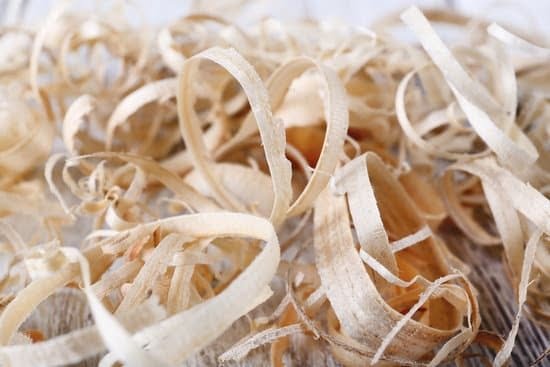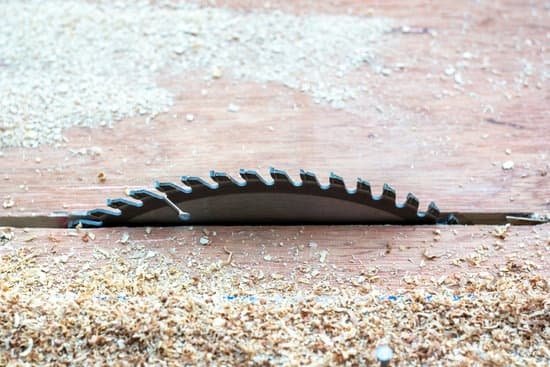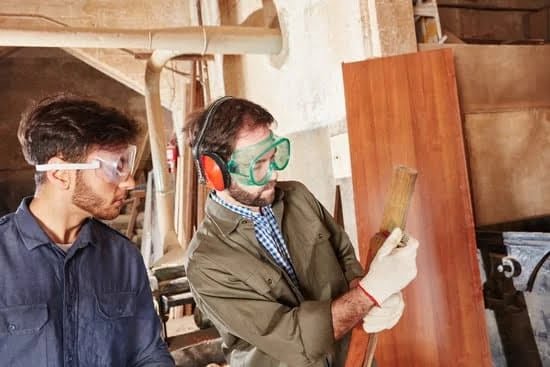What is the best woodworking sealant for outdoor wood furniture? When it comes to protecting your outdoor wood furniture from the elements, choosing the right sealant is crucial. Without proper protection, wood furniture can deteriorate quickly, losing its luster and structural integrity. In this article, we will explore the importance of using a woodworking sealant for outdoor wood furniture and provide valuable insights into selecting the best sealant for your specific needs.
Outdoor wood furniture is constantly exposed to harsh environmental conditions such as sunlight, rain, and extreme temperature changes. Without adequate protection, wood can warp, crack, or rot, leading to costly repairs or replacement.
This is where woodworking sealants come into play – they act as a barrier against moisture and UV damage while enhancing the natural beauty of the wood. By understanding the significance of using a sealant, you can effectively prolong the lifespan of your outdoor wood furniture and reduce maintenance efforts in the long run.
In this comprehensive guide, we will delve into the different types of woodworking sealants available in the market, such as oil-based, water-based, and varnish options. We will also discuss important factors to consider when choosing a sealant for outdoor wood furniture, including weather resistance, UV protection, and ease of application.
Additionally, we will review top-rated sealants and provide step-by-step instructions on proper application techniques for long-lasting protection. Whether you are a seasoned woodworker or a DIY enthusiast, this article aims to equip you with essential knowledge to make informed decisions about protecting your outdoor wood furniture.
Types of Woodworking Sealants
When it comes to choosing the best woodworking sealant for outdoor wood furniture, there are several options available in the market. Understanding the different types of sealants can help you make an informed decision based on your specific needs and preferences.
Oil-Based Sealants
Oil-based sealants are known for their ability to penetrate deep into the wood, providing long-lasting protection. They are ideal for outdoor wood furniture as they offer excellent water resistance and UV protection. Additionally, oil-based sealants enhance the natural beauty of the wood, giving it a warm and rich appearance. However, they do require more time to dry compared to other types of sealants.
Water-Based Sealants
Water-based sealants have gained popularity due to their environmentally-friendly nature and ease of application. These sealants provide good protection against moisture and UV rays while allowing the natural color of the wood to shine through. They also dry faster than oil-based sealants, making them a convenient option for outdoor furniture projects.
Varnish Sealants
Varnish sealants create a protective film on the surface of the wood, offering strong resistance against weather elements such as rain, sun, and wind. They come in different finishes such as matte, satin, or gloss, allowing you to achieve the desired look for your outdoor wood furniture. Varnish sealants are durable and provide excellent protection but may require more maintenance over time.
Considering these options will help you determine what is the best woodworking sealant for outdoor wood furniture based on your specific requirements such as weather resistance, UV protection, and ease of application. Each type has its own advantages and limitations, so it’s important to carefully assess which one aligns with your project goals before making a decision.
Factors to Consider
When choosing the best woodworking sealant for outdoor wood furniture, there are several important factors to consider to ensure that your furniture is well-protected against the elements. One of the most crucial factors to take into account is weather resistance.
Since outdoor wood furniture is constantly exposed to changing weather conditions, it is essential to select a sealant that can withstand moisture, extreme temperatures, and other environmental stressors. Look for sealants specifically designed for outdoor use, as they are formulated to provide superior protection against rain, snow, and humidity.
In addition to weather resistance, UV protection is another critical consideration when selecting a woodworking sealant for outdoor wood furniture. Exposure to sunlight can cause wood to fade and deteriorate over time. Therefore, it is important to choose a sealant that contains UV inhibitors or offers UV resistance to prevent the wood from being damaged by the sun’s rays.
Furthermore, ease of application is an important factor to think about when choosing a sealant for outdoor wood furniture. Look for products that are easy to apply and maintain, especially if you plan on resealing your furniture periodically. Some sealants may require multiple coats or specific application techniques, so be sure to follow the manufacturer’s instructions for optimal results.
Considering these factors will help you narrow down your options and choose the best woodworking sealant for your outdoor wood furniture. By prioritizing weather resistance, UV protection, and ease of application, you can ensure that your outdoor wood furniture remains beautiful and well-protected for years to come.
| Factor | Consideration |
|---|---|
| Weather Resistance | Select a sealant designed specifically for outdoor use |
| UV Protection | Look for sealants with UV inhibitors or UV resistance |
| Ease of Application | Choose products that are easy to apply and maintain |
Best Woodworking Sealants for Outdoor Wood Furniture
When it comes to protecting outdoor wood furniture, choosing the right woodworking sealant is crucial for ensuring its longevity and durability. With various options available in the market, it can be overwhelming to determine which sealant is the best choice for your specific needs. From oil-based to water-based and varnish sealants, each type offers unique benefits and considerations that need to be taken into account.
One of the most important factors to consider when selecting a woodworking sealant for outdoor wood furniture is its ability to withstand different weather conditions. The sealant should provide excellent weather resistance, protecting the wood from moisture, heat, cold, and other environmental factors. Additionally, UV protection is vital for preventing the wood from fading or deteriorating due to sun exposure.
Another crucial consideration is the ease of application. The best woodworking sealant for outdoor wood furniture should be user-friendly and easy to apply, ensuring a smooth and even finish without requiring extensive expertise or tools. This is especially important for DIY enthusiasts who may not have professional equipment at their disposal.
In terms of effectiveness, some of the top-rated sealants on the market include products that have been proven to provide long-lasting protection against the elements. These sealants often receive positive reviews from customers who have used them on their outdoor wood furniture with successful results. Understanding the strengths and weaknesses of each sealant can help you make an informed decision about which one is best suited for your specific project.
| Woodworking Sealant Type | Key Features |
|---|---|
| Oil-Based Sealant | Excellent weather resistance; deep penetration into wood fibers |
| Water-Based Sealant | Low odor; quick drying time; environmentally friendly |
| Varnish Sealant | High gloss finish; durable protection against UV rays |
By comparing these key features, individuals can understand what makes each type of woodworking sealant unique and which one might be the best fit for their specific outdoor wood furniture project.
Application Techniques
When it comes to protecting outdoor wood furniture, choosing the right woodworking sealant is crucial. However, applying the sealant properly is just as important to ensure long-lasting protection against the elements. Whether you opt for an oil-based, water-based, or varnish sealant, the application techniques can make a significant difference in the effectiveness of the sealant. Below are step-by-step instructions on how to properly apply sealant to outdoor wood furniture:
1. Preparation: Before applying any sealant, it’s essential to prepare the wood surface. Start by sanding the furniture to smooth out any rough spots and ensure a clean, even surface. Use sandpaper with a grit suitable for outdoor wood furniture.
2. Cleaning: Once the sanding is complete, thoroughly clean the furniture to remove any dust, dirt, or debris. Use a mild soap and water solution and allow the wood to dry completely before proceeding.
3. Application: When applying the woodworking sealant, follow the manufacturer’s instructions for best results. Using a brush or roller, apply an even coat of sealant in the direction of the wood grain. Be sure not to oversaturate the wood and avoid leaving any puddles or drips.
4. Drying time: Allow the first coat of sealant to dry completely according to the manufacturer’s recommendations. This may take several hours or even a day, depending on the type of sealant used.
5. Additional coats: Depending on the type of woodworking sealant chosen, you may need to apply additional coats for optimal protection. Follow the same application process for each subsequent coat, allowing adequate drying time between coats.
By following these step-by-step instructions for applying woodworking sealant to outdoor wood furniture, you can ensure that your furniture is well-protected against weather-related damage and prolonged exposure to UV rays.
Remember that proper application goes hand in hand with choosing the best woodworking sealant for outdoor wood furniture; so take into consideration factors such as weather resistance and UV protection when making your selection.
Maintenance Tips
Outdoor wood furniture requires regular maintenance to ensure its longevity and durability in outdoor environments. Proper maintenance not only ensures the aesthetic appeal of the furniture but also protects it from the damaging effects of weather, UV rays, and moisture. Here are some maintenance tips and suggestions on how to maintain and reseal outdoor wood furniture:
1. Regular cleaning: Regularly clean outdoor wood furniture to remove dirt, grime, and any other debris that can accumulate on the surface. Use a mild soap or wood cleaner with a soft brush or cloth to gently scrub the surface. Rinse thoroughly with water and allow it to dry completely before applying any sealant.
2. Inspect for damage: Periodically inspect outdoor wood furniture for any signs of damage such as cracks, splinters, or discoloration. Address any issues immediately to prevent further damage and ensure the longevity of the furniture.
3. Resealing: Over time, the initial sealant applied to outdoor wood furniture may wear off due to exposure to the elements. It is important to reseal the furniture periodically to maintain its protection and prolong its lifespan. When considering resealing, it is crucial to choose a sealant that offers superior weather resistance, UV protection, and easy application.
By following these maintenance tips and regularly resealing outdoor wood furniture with a high-quality woodworking sealant specifically designed for outdoor use, individuals can ensure that their furniture remains beautiful and resilient against environmental factors for years to come.
DIY Sealant Options
When it comes to woodworking sealants for outdoor wood furniture, some individuals may prefer natural and eco-friendly options over commercial products. Fortunately, there are DIY sealant recipes that can provide effective protection for outdoor wood furniture while also minimizing the use of harsh chemicals. These homemade sealants often utilize natural oils and waxes to create a protective barrier against moisture, UV rays, and other outdoor elements.
One popular homemade sealant recipe involves combining equal parts of linseed oil, tung oil, and beeswax. This mixture can be heated on a stovetop until the beeswax is completely melted, creating a smooth liquid sealant. Once cooled, the DIY sealant can be applied to outdoor wood furniture using a brush or cloth, allowing it to penetrate the wood for long-lasting protection. This natural sealant provides a beautiful finish while also nourishing the wood to prevent drying and cracking.
Another eco-friendly option for woodworking sealants is a blend of sustainably-sourced raw linseed oil and pine tar. This simple mixture creates a protective layer that enhances the natural beauty of the wood while also providing excellent weather resistance. Pine tar has been used for centuries as a natural preservative for wood, making it an ideal choice for those seeking environmentally-friendly alternatives to commercial sealants.
For individuals who are concerned about chemical sensitivities or environmental impact, these DIY sealant options offer an attractive alternative to traditional woodworking sealants. By utilizing natural ingredients, it’s possible to protect outdoor wood furniture while promoting sustainability and eco-conscious practices in woodworking projects.
Whether you choose a homemade sealant or a commercial product, it’s important to consider the specific needs of your outdoor wood furniture and prioritize both effectiveness and environmental stewardship when selecting a woodworking sealant. With careful consideration and proper application, you can ensure that your outdoor wood furniture remains beautiful and protected for years to come.
Conclusion
In conclusion, choosing the best woodworking sealant for outdoor wood furniture is crucial in protecting your investment against the harsh elements. Whether you opt for an oil-based, water-based, or varnish sealant, it’s important to consider factors such as weather resistance, UV protection, and ease of application. By taking these considerations into account, you can ensure that your outdoor wood furniture remains in top condition for years to come.
When it comes to the best woodworking sealants for outdoor wood furniture, there are several top-rated options available in the market that offer effective protection against moisture, sunlight, and other environmental factors. It’s essential to look for sealants that are specifically designed for outdoor use and provide long-lasting durability. By carefully selecting the right sealant, you can extend the lifespan of your outdoor wood furniture and maintain its natural beauty.
In addition to choosing the best woodworking sealant for outdoor wood furniture, it’s also important to follow proper application techniques and maintenance tips to maximize the effectiveness of the sealant. Regular maintenance and resealing will help prolong the life of your outdoor wood furniture and keep it looking like new. Whether you prefer commercial products or homemade sealant recipes, selecting the right woodworking sealant is essential in preserving the beauty and integrity of your outdoor wood furniture.
Frequently Asked Questions
What Is the Best Product to Seal Outdoor Wood Furniture?
The best product to seal outdoor wood furniture is a high-quality exterior wood sealant or finish. Look for products specifically designed for outdoor use, as they are formulated to withstand the elements.
How Do You Seal Outdoor Wood Furniture?
To seal outdoor wood furniture, start by sanding the surface to ensure it’s smooth and free of imperfections. Then, apply the chosen sealant or finish using a brush, roller, or sprayer. Follow the manufacturer’s instructions for the best results.
What Finish Should You Use on Outdoor Wood Furniture?
The ideal finish for outdoor wood furniture is one that provides both protection and aesthetics. Look for a durable exterior polyurethane or varnish that offers UV protection and moisture resistance. This will help keep your furniture looking great despite being exposed to the elements.

Hi everyone! I’m a woodworker and blogger, and this is my woodworking blog. In my blog, I share tips and tricks for woodworkers of all skill levels, as well as project ideas that you can try yourself.





